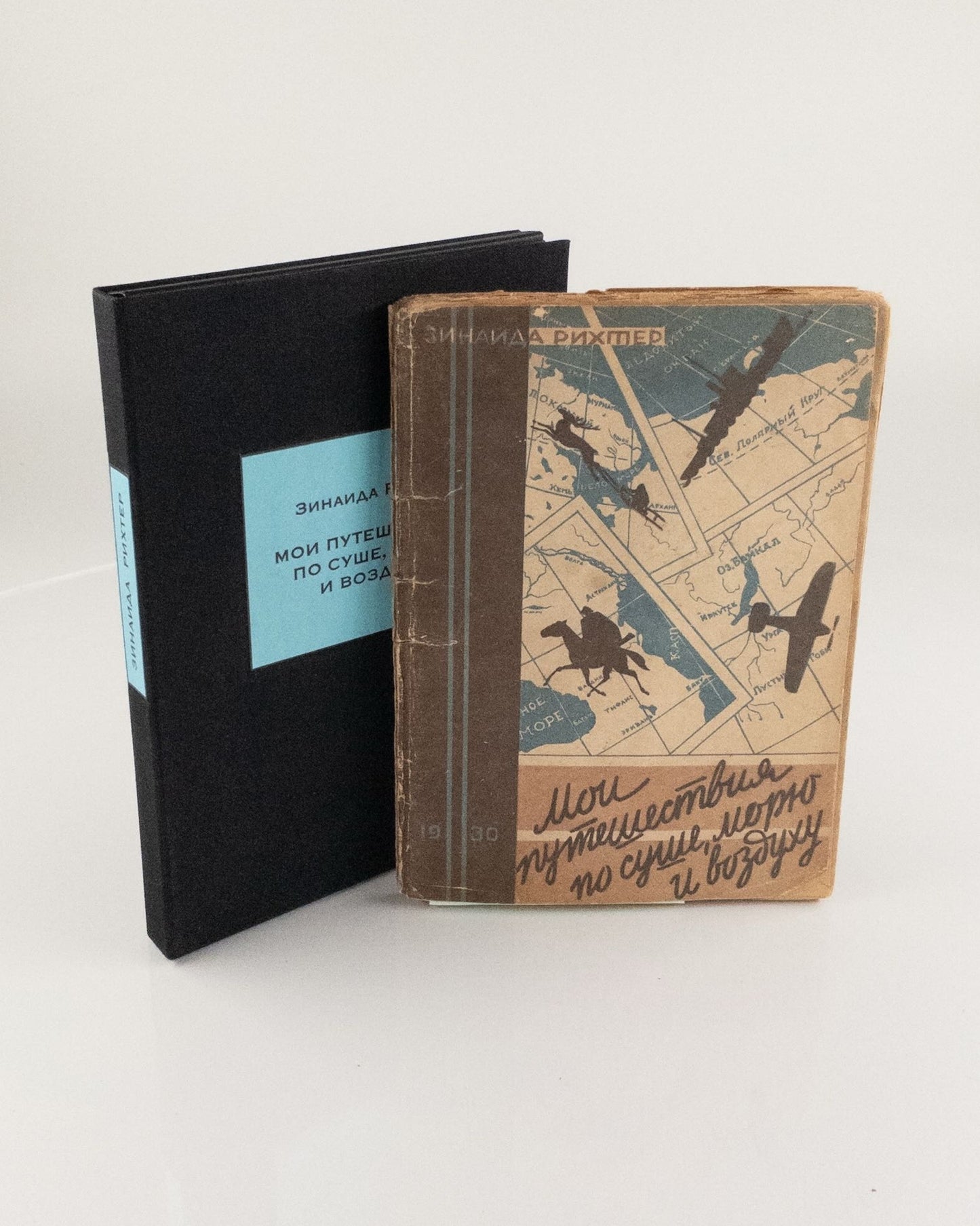Rikhter, Zinaida
My Journeys by Land, Sea, and Air. A Woman Journalist on the first Soviet aviation flight 'Moscow-Beijing–Tokyo'
My Journeys by Land, Sea, and Air. A Woman Journalist on the first Soviet aviation flight 'Moscow-Beijing–Tokyo'
Couldn't load pickup availability
Rikhter, Zinaida [My Journeys by Land, Sea, and Air]. Moi Puteshestviia po Sushe, Moriu i Vozdukhu.
Supplement to the magazine ‘Vokrug Sveta’.
Cover design and illustrations by N. Kochergin.
Leningrad, Izdatel’stvo “Krasnaia gazeta”, 1930.
8vo, 142, [1] pp., ill.
In original pictorial wrappers and modern clamshell box.
In good condition, rubbed and lightly soiled, short tears to edges, tears to spine, pencil mark to back cover.
The only edition of this collection of essays.
This book is a collection of essays by Zinaida Rikhter (Richter; 1890–1967), a journalist and traveler recognized as one of the first Soviet women to undertake major journeys as a reporter and travel writer in the 1920s and 1930s. The essays reflect her travels between 1923 and 1928 through the North Caucasus, the Far Northwest (Murmansk Oblast), China and Mongolia, Eastern Siberia, Wrangel Island, and Kyrgyz nomadic camps (the so-called 'Asian Switzerland'). Originally published in newspapers, they were later gathered and issued as a separate volume.
Among the most remarkable pieces is 'Velikii Perelet' ('The Great Flight'), which recounts the 1925 Moscow–Beijing–Tokyo flight through Mongolia – the first time Soviet aviators crossed the entire USSR from west to east. Rikhter took part in this event – likely only as far as Beijing – becoming the first woman to participate in such an air expedition. She vividly described how the airplanes affected the local population in Mongolia, her experiences in Chinese towns, and much more.
During a stop in China (before reaching Beijing), she noted that they had halted near the residence of Feng Yuxiang, a powerful warlord who controlled much of Northwest China. Feng, leader of the Guominjun (National People’s Army), had seized Beijing in a 1924 coup, overthrowing the Zhili clique and imprisoning President Cao Kun. He later established his base in Kalgan (modern Zhangjiakou). When the Soviet expedition passed through the area, Rikhter observed that the site was decorated with two flags – the USSR and the Kuomintang (KMT), who at that time were allied with the Guominjun.
At the time, the Soviet Union regarded the Kuomintang (KMT) as a useful ally against Western and Japanese influence in China. In the 1920s, the Soviets provided political, military, and organizational support, formalized in the 1923 Sun–Joffe Manifesto, and encouraged the First United Front (1924–1927) between the KMT and the Chinese Communist Party (CCP).
Relations broke down in 1927, when Chiang Kai-shek purged the Communists in the Shanghai Massacre, sparking a long civil war. The USSR later renewed its support for the KMT during the Second Sino–Japanese War (1937–1945), but after World War II shifted decisively to backing the CCP, aiding their victory over the Nationalists.
We couldn’t trace any copy of this edition in the USA or European libraries via OCLC.








